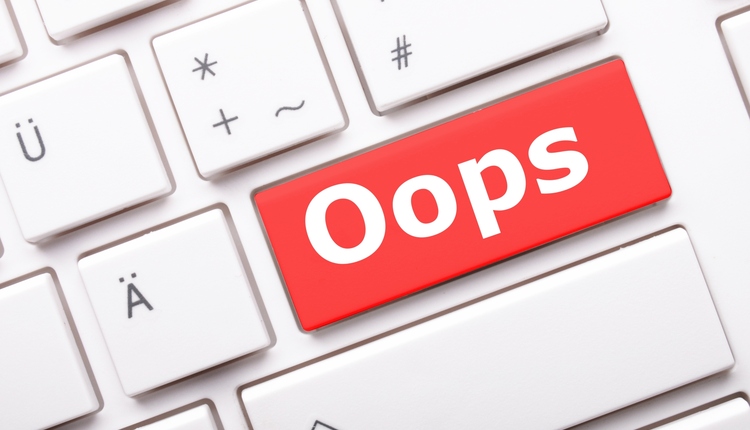![Mike_Porter_70x100_1[1]_2 Mike_Porter_70x100_1[1]_2](https://cms-static.wehaacdn.com/mailingsystemstechnology-com/images/Mike_Porter_70x100_1-1-_2.167.0.0.jpg)
Boy, am I glad the postal mailbox out in front of my house doesn't mirror my email inbox. I'd have to invest in a bigger receptacle! At this writing, I have 640 unread messages in my Outlook inbox. And my Deleted Items folder contains an equal number of unimportant, uncompelling, irrelevant, or offensive messages.
All of us who are in the business of producing paper-based mail hear all the time about why electronic delivery is so much better than old-fashioned postal mail. Email is faster and cheaper to be sure. But isn't it curious that electronic mailers have chosen to use that extra time and money to simply swamp us with more and more messages? Flood people with enough messages and they are bound to pay attention to one of them, right?
Spray and Pray 2.0?
When we followed this strategy with print over the last few decades it was called "spray and pray". We did it because there were no tools to easily eliminate unlikely respondents, finely hone the content, or print colorful personalized documents that matched the interests of the individual recipients. Repeatedly sending identical mass quantities was the only way to garner a satisfactory level of response.
But for email marketers today those tools do exist. And the composition task is even easier for electronic documents unencumbered by envelope capacities, mailing weight considerations, or paper size. Plus, there are opportunities for exposing customers to lots of expanded content through PURL's or other targeted landing pages that are pretty simple to set up.
But for the most part, individualized email messaging isn't happening. 90% of the marketing emails I receive have all the personalization of a pre-printed postcard. Judging by the lack of targeting that comes to me, I suspect that in most cases every name on the list gets the exact same email.
As a result of this lackluster effort, we've all had to become pretty good at filtering emails - either by setting up automatic filters or by simply choosing (in fractions of a second) whether an email message merits our attention. I spend as much time cleaning out my inbox as I do reading the few eyeball-worthy emails that remain. Sometimes it gets so overwhelming that I indiscriminately delete older messages in mass - they never get seen at all.
Smarter Postal Mail Could be the Answer
So where does that leave those of us who work in the physical document world? Seems like an opportunity to me. We don't really need to compete with email, we just need to be smarter and do everything we can to make our paper mail better. We have to. The cost to send a poorly-constructed email is almost nothing compared to what it takes to speak intelligently to a customer on paper. So we'd better have a pretty good idea about our chances to elicit a response from every piece of mail we send, and be confident that the messages are going to be delivered, opened, and read.
The great news is that print/mail people have the tools now too. We just need to spend some more time figuring out how to use them all, or work more closely with the database analysts. And many printing professionals will have to overcome the limiting patterns of thought and behavior that have built up over generations. But if the industry can accomplish that, then paper mail has an advantage. Due to the recession we've got something that email doesn't - an uncluttered mailbox.
Mike Porter is an expert in Print and Mail operations and President of Print/Mail Consultants, an independent consulting firm that helps companies nationwide be more productive, adapt to changing requirements, and lower costs in their document operations. For more ideas and tips about effective documents, sign up for Mike's free newsletter at www.printmailconsultants.com or email him directly at mporter@printmailconsultants.com.
All of us who are in the business of producing paper-based mail hear all the time about why electronic delivery is so much better than old-fashioned postal mail. Email is faster and cheaper to be sure. But isn't it curious that electronic mailers have chosen to use that extra time and money to simply swamp us with more and more messages? Flood people with enough messages and they are bound to pay attention to one of them, right?
Spray and Pray 2.0?
When we followed this strategy with print over the last few decades it was called "spray and pray". We did it because there were no tools to easily eliminate unlikely respondents, finely hone the content, or print colorful personalized documents that matched the interests of the individual recipients. Repeatedly sending identical mass quantities was the only way to garner a satisfactory level of response.
But for email marketers today those tools do exist. And the composition task is even easier for electronic documents unencumbered by envelope capacities, mailing weight considerations, or paper size. Plus, there are opportunities for exposing customers to lots of expanded content through PURL's or other targeted landing pages that are pretty simple to set up.
But for the most part, individualized email messaging isn't happening. 90% of the marketing emails I receive have all the personalization of a pre-printed postcard. Judging by the lack of targeting that comes to me, I suspect that in most cases every name on the list gets the exact same email.
As a result of this lackluster effort, we've all had to become pretty good at filtering emails - either by setting up automatic filters or by simply choosing (in fractions of a second) whether an email message merits our attention. I spend as much time cleaning out my inbox as I do reading the few eyeball-worthy emails that remain. Sometimes it gets so overwhelming that I indiscriminately delete older messages in mass - they never get seen at all.
Smarter Postal Mail Could be the Answer
So where does that leave those of us who work in the physical document world? Seems like an opportunity to me. We don't really need to compete with email, we just need to be smarter and do everything we can to make our paper mail better. We have to. The cost to send a poorly-constructed email is almost nothing compared to what it takes to speak intelligently to a customer on paper. So we'd better have a pretty good idea about our chances to elicit a response from every piece of mail we send, and be confident that the messages are going to be delivered, opened, and read.
The great news is that print/mail people have the tools now too. We just need to spend some more time figuring out how to use them all, or work more closely with the database analysts. And many printing professionals will have to overcome the limiting patterns of thought and behavior that have built up over generations. But if the industry can accomplish that, then paper mail has an advantage. Due to the recession we've got something that email doesn't - an uncluttered mailbox.
Mike Porter is an expert in Print and Mail operations and President of Print/Mail Consultants, an independent consulting firm that helps companies nationwide be more productive, adapt to changing requirements, and lower costs in their document operations. For more ideas and tips about effective documents, sign up for Mike's free newsletter at www.printmailconsultants.com or email him directly at mporter@printmailconsultants.com.













